Speciated Organic Gas Analysis
Volatile organic compounds (VOCs) are a group of organic compounds which have a low vapour pressure at room temperature, meaning that they will readily evaporate into the surrounding air. The term VOC refers to many different classes of organic compounds such as alkanes, alkenes, alcohols, aldehydes, aromatics and many more.
Complex mixes of VOC occur in many processes and need to be identified and quantified for either regulatory reasons or process control. Different classes of VOCs can have different requirements on measurement. Separate measurement of highly harmful VOCs such as benzene, vinyl chloride or 1,2-dichloromethane is of benefit in the analysis of ambient air in the workplace. Similarly, separating our emissions into Class A and Class B types, as legislation classifies VOCs, is of use to industry so the levels of each can be reduced.
VOC Measurement
The most common method of online continuous VOC measurement is Flame Ionisation Detection (FID). FID analysers work by the pyrolysis of the organic gases in a flame of H2 or H2/He mix. A FID will produce a single measurement of Total Organic Content (TOC). The FID gives no indication of what species are being measured. For example, a plant operator may only be concerned with chlorinated organic gases passing through the processes, in the presence of other organic species.
Each organic molecule will respond differently to the pyrolysis action in the FID. Molecules that contain oxidised carbon atoms (C-O bonds) such as aldehydes, alcohols or amines do not respond well. FID is not the best technique for speciation of mixtures of gases. When coupled with a GC, speciation is possible. But slow measurement time and complex set-up and calibration issues with GC make it unfavourable for real-time process or emissions measurements.
By using the atmosFIR gas analyser platform based on FTIR spectroscopy, Protea can speciate complex mixtures of hundreds of VOCs quickly and accurately. As an example, Fig. 1 lists 25+ components from an engine emission application, where Protea provided a system that would qualify and quantify using atmosFIR.
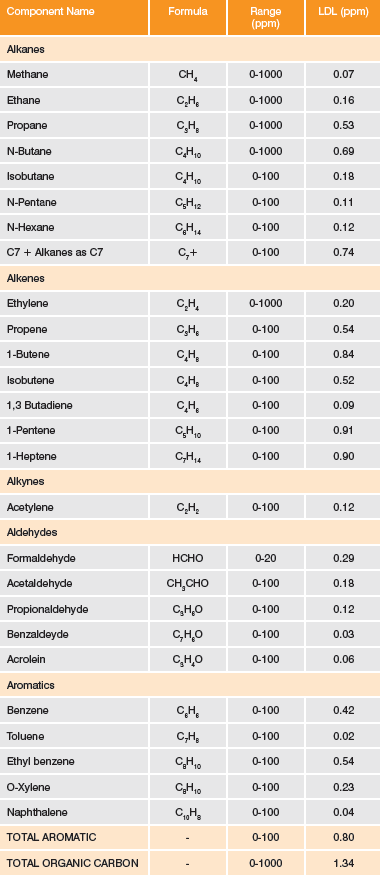
Figure 1 - Example of speciation of VOCs
with atmosFIR FTIR gas analyser
atmosFIR Solution
The large number of speciated VOCs that we can measure with atmosFIR is due to both software and hardware.
Our in-house developed spectral analysis methods in software coupled with the fact that atmosFIR is a powerful high resolution analyser (1cm-1 as standard, 0.5cm-1 option) make our solution ideal for separating complex mixtures into individual contributions.
Although the absorption spectra of VOCs, particularly within a certain class, are similar, subtle differences can be observed when measured at a high resolution.
These differences are due to the variations in vibrational frequencies of the molecules, which vary with bond type, number and spatial orientation.
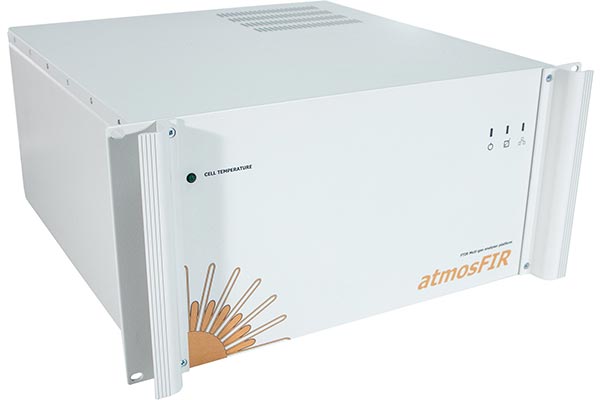
Figure 2 - atmosFIR FTIR analyser
High Resolution and 19” rack ready for installation
Classifying VOCs
With the analysis of VOCs on the Protea FTIR analyser, it is possible to group the analytes according to functional group and then build a separate analytical model for each group. This way we can choose to analyse the most appropriate region of the spectrum for these species. This can give more accurate predications when new or unknown gas species of certain types are present. For example if a new alcohol is present it will be accounted for in the alcohols result and can reduce false readings on other results. Figure 3 summarises how species are grouped and the analysis bands in the IR spectrum that are used.
For example, larger straight chain alkane compounds, as shown in Figure 4, give strong absorption bands which are distinctive from smaller alkane species and other high carbon organic species (for example cycloalkanes, or poly-aromatic hydrocarbons). This means we can measure them as a group to give a total C7 + number.
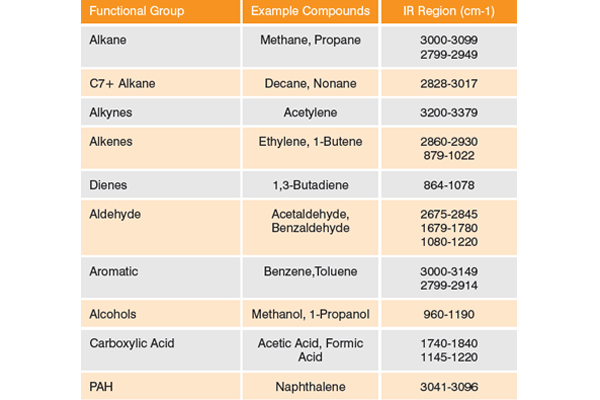
Figure 3 - Functional Groups, Compounds
and the regions of the IR spectrum used
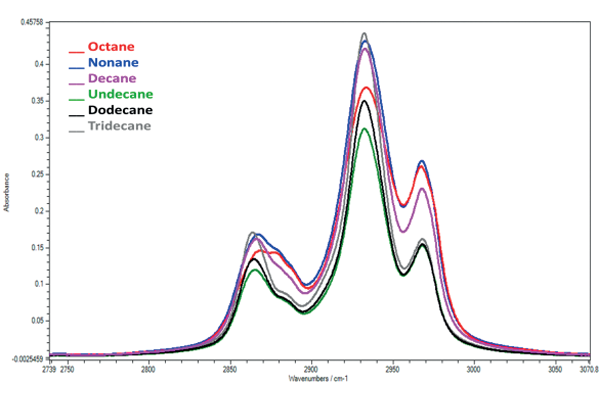
Figure 4 - Showing the overlapping spectral features of C8 to C13 n-alkanes
Simplicity of Measurement
atmosFIR will display readings for individual speciated VOCs, Class A or B totals, functional group analysis and Total C7+ alkanes all in real-time. There is no limit to the number of different VOCs that can be reported at once. As well the above speciation, of course then the Total Organic Carbon value can also be calculated from the addition of the real individual VOCs. Compared to FID, the different in detail and understanding that can be taken of a measured sample from using atmosFIR is huge.
As the VOC analysis algorithms can be pre-calibrated and pre-loaded into the embedded analysis method within the software, there are less calibration issues than with GCs. Consumables with FTIR are low, with no need for fuel for FID, or carrier gas for GC. The reading is real-time and of the order of 1 minute sample or quicker, compared to 5-10 minute retention in a GC.
Whether it is in the lab or on plant, the atmosFIR FTIR gas analysis is the most powerful tool for VOC analysis.
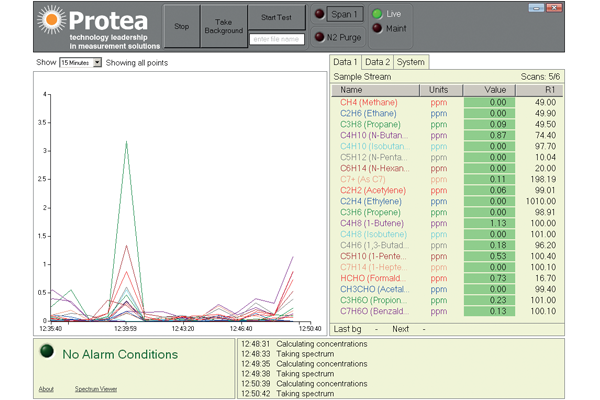
Figure 5 - PAS-Pro Real-time
speciated of VOCs
